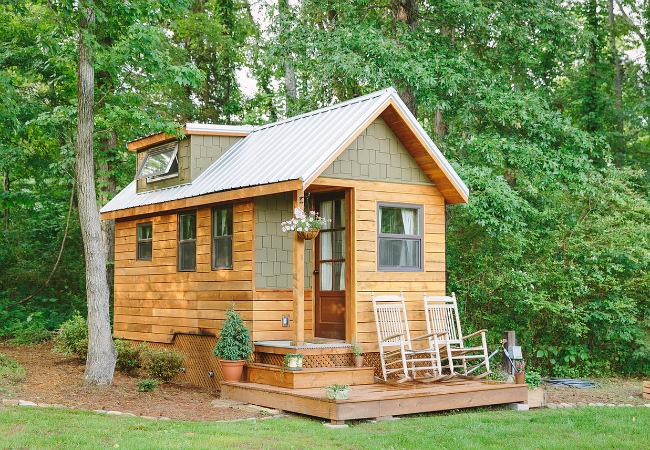In an era where housing costs eat up a significant chunk of our income, the tiny house movement has gained traction across the United States. One couple, Travis and Brittany Pyke of Chattanooga, Tennessee, took the plunge into this trend by building their own cozy abode back in 2013. Their motivation? To escape the clutches of exorbitant rent payments and gain the freedom of homeownership without the burden of a mortgage.

Fast forward a year, and Travis, alongside two friends, founded Wind River Tiny Homes, a venture dedicated to crafting small homes with prices starting at a modest $40,000. But what exactly is a “tiny” home? Typically, it ranges from 100 to 300 square feet for mobile homes and 500 to 600 square feet for those with a permanent foundation. The Pykes, veterans of tiny living, share some invaluable strategies for making your life in a tiny home not just manageable, but enjoyable.

1. Have Clear Reasons: Living in a tiny home necessitates downsizing your possessions, but it doesn’t mean you have to abandon your dreams. Brittany suggests starting with a list of life goals. Knowing what matters most to you can help you cut back on unnecessary expenses and make informed choices.
2. Reduce Expenses by Category: Cutting back on possessions can be overwhelming. Travis advises tackling this in stages by reducing one category at a time. Whether it’s clothes, kitchen utensils, or office supplies, begin with the easiest category to create a positive mindset. Assess each item’s importance, and if it hasn’t seen use in the past month, consider parting with it. Living with less can make you feel like you have more, as every item you own becomes valuable and cherished.
3. Customize Your Space: Designing a tiny home requires meticulous attention to detail. Consider your lifestyle and location. Identify where you spend most of your time and your specific needs. Whether it’s a passion for cooking, entertaining, or a unique hobby, tailor your space accordingly. Location also plays a vital role, influencing insulation, window placement, utilities, and materials. A tiny home in Vermont may prioritize insulation and heating, while one in Florida might focus on cooling and outdoor living space.
4. Maximize Every Nook and Cranny: In small home design, eliminating dead space is essential. Almost every corner can serve as storage or shelving. Get creative with functional solutions, such as bookshelves that double as ladders or tables that fold against the wall to save space. As long as insulation isn’t compromised, consider integrating features like a spice cabinet or a fold-down ironing board between wall studs.
5. Understand Your Utilities: Tiny house utilities largely resemble those in regular homes, with some exceptions. Water connections and drainage may require adaptation, such as attaching an RV hose to an outdoor faucet. To address wastewater, composting toilets can be an option, or if zoning allows, create a gray and black water disposal field. Heating and cooling options vary depending on your climate, from efficient propane and gas heaters to strategically placed screens and fans to maintain airflow.
6. Cherish Closeness: Privacy takes a back seat in tiny homes, but that can be a blessing. Travis and Brittany highlight how living in close quarters can enhance communication and strengthen relationships. Embrace the coziness by finding your own corner of comfort, whether it’s a favorite chair with a good book or a shared space for quality time. The key to thriving in a tiny house is to keep it organized and tidy.

Embracing the tiny house movement isn’t just about downsizing; it’s a lifestyle choice that promotes conscious living, financial freedom, and a deeper connection with what truly matters. With thoughtful planning and creative design, anyone can find contentment in the snug embrace of a tiny home.
image source : Tiny Home Living / Lofted Bed – Travis & Brittany Pyke – Wind River Tiny Homes – Small Kitchen










